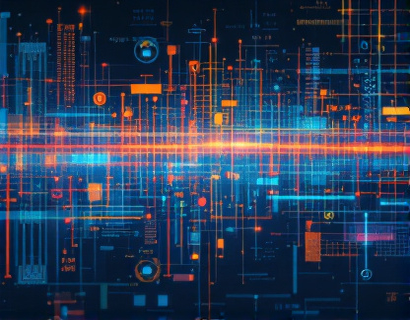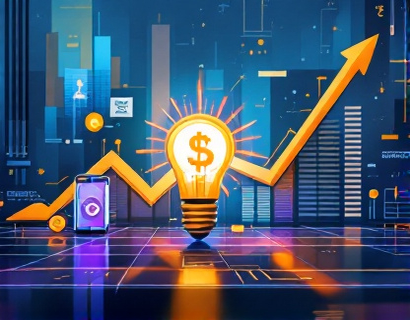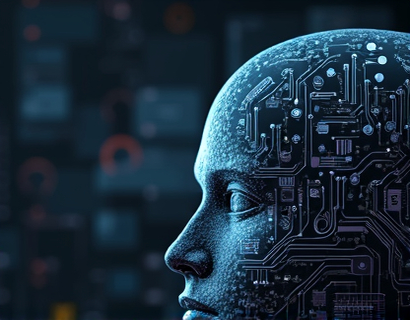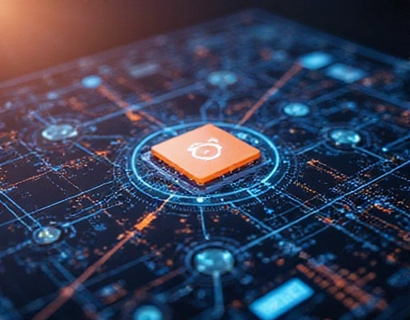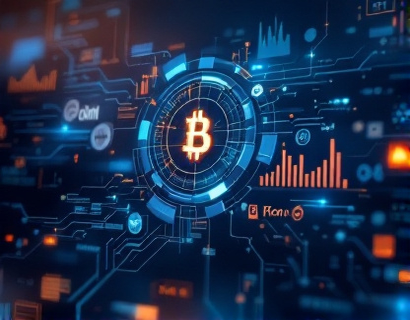Revolutionizing Digital Asset Management: The Power of Decentralized dApps for Cross-Blockchain Conversion
The landscape of blockchain technology is rapidly evolving, presenting both opportunities and challenges for professionals and enthusiasts alike. One of the most significant hurdles in the adoption and utility of blockchain solutions is the interoperability between different blockchains. Traditional methods of converting digital assets from one blockchain to another often involve complex processes, high transaction fees, and potential security risks. However, a groundbreaking decentralized application (dApp) is changing the game by streamlining cross-blockchain digital asset conversion, offering unparalleled compatibility and efficiency.
Understanding the Need for Cross-Blockchain Conversion
The diversity of blockchains, each with its unique features and use cases, has led to a fragmented ecosystem where digital assets are often confined to specific platforms. This fragmentation hinders the full potential of blockchain technology, limiting the ability of users to leverage assets across different networks. The need for a seamless and secure method to convert and transfer digital assets between blockchains has become increasingly apparent. This is where the power of decentralized dApps comes into play, providing a solution that aligns with the core principles of blockchain: decentralization, transparency, and security.
Introducing the Decentralized Solution
The dApp in focus is designed to address the challenges of cross-blockchain asset conversion by leveraging the latest advancements in blockchain technology. This decentralized platform operates independently of any central authority, ensuring that the conversion process is transparent and tamper-proof. By utilizing smart contracts and decentralized networks, the dApp facilitates the seamless transfer of digital assets across various blockchains without the need for intermediaries.
Key Features of the Decentralized dApp
- Decentralized Architecture: The dApp operates on a decentralized network, eliminating single points of failure and enhancing security.
- Smart Contract Integration: Utilizing smart contracts ensures that the conversion process is automated, reliable, and verifiable by all participants.
- Cross-Chain Compatibility: The platform supports a wide range of blockchains, allowing users to convert assets between nearly any pair of chains.
- User-Friendly Interface: Despite its complex underlying technology, the dApp offers an intuitive interface, making it accessible to both technical and non-technical users.
- Cost-Effective: By removing intermediaries, the dApp significantly reduces transaction costs associated with traditional conversion methods.
How the Decentralized dApp Works
The process of converting digital assets using the decentralized dApp is straightforward and efficient. Here’s a step-by-step breakdown of how it operates:
First, the user initiates the conversion process by selecting the source and target blockchains. The dApp then identifies the specific digital asset to be converted and checks the compatibility of the target blockchain. Once the process is confirmed, the dApp generates a smart contract that outlines the conversion parameters, including the asset details and the target blockchain's requirements.
The smart contract is deployed on the decentralized network, where it executes the conversion automatically. This involves several sub-processes, such as verifying the asset's ownership, transferring the asset to the smart contract, and minting the equivalent asset on the target blockchain. Throughout this process, all transactions are recorded on the blockchain, ensuring transparency and immutability.
Upon successful conversion, the user receives the newly minted asset on the target blockchain. The entire process is designed to be seamless, with real-time updates and notifications to keep the user informed at each stage.
Enhancing Security and Trust
Security is a paramount concern in the world of blockchain and digital assets. The decentralized dApp addresses this by employing several robust security measures:
- Decentralized Consensus: The use of decentralized consensus mechanisms ensures that no single entity can manipulate the conversion process.
- Smart Contract Audits: Regular audits of the smart contracts used in the conversion process help identify and mitigate potential vulnerabilities.
- Multi-Signature Wallets: Critical operations, such as asset transfer and smart contract deployment, require multi-signature approvals to prevent unauthorized access.
- End-to-End Encryption: All data transmitted between the user’s wallet and the dApp is encrypted, protecting sensitive information from interception.
Benefits for Blockchain Professionals and Digital Asset Managers
The introduction of this decentralized dApp brings numerous advantages for professionals and enthusiasts in the blockchain space:
Increased Efficiency
The automated and streamlined conversion process significantly reduces the time and effort required to move digital assets between blockchains. This efficiency is particularly beneficial for digital asset managers who handle large portfolios across multiple platforms.
Reduced Costs
By eliminating intermediaries, the dApp lowers transaction fees associated with traditional conversion methods. This cost reduction can lead to substantial savings for both individuals and organizations managing digital assets.
Enhanced Flexibility
The cross-chain compatibility of the dApp allows users to access a broader range of blockchain ecosystems, enhancing the flexibility and utility of their digital assets. This is especially valuable for projects that aim to leverage the unique features of different blockchains.
Improved User Experience
The user-friendly interface and real-time feedback mechanisms ensure that users can manage their assets with ease, even if they are not deeply technical. This democratization of blockchain technology makes it more accessible to a wider audience.
Case Studies and Real-World Applications
To illustrate the practical benefits of the decentralized dApp, consider a few real-world scenarios:
First, a decentralized finance (DeFi) project needs to transfer a large amount of Ether from Ethereum to Binance Smart Chain to execute a smart contract. Using the dApp, the project can initiate the conversion process, which is completed swiftly and at a fraction of the cost of traditional methods. This efficiency allows the project to proceed without delays, maximizing its potential returns.
Another scenario involves a digital asset manager who needs to diversify a client's portfolio by moving assets from Bitcoin to Solana. The dApp simplifies this process, ensuring that the transfer is secure and cost-effective. The manager can focus on strategic decision-making rather than getting bogged down by the technicalities of asset conversion.
Future Prospects and Developments
The potential for decentralized dApps in cross-blockchain asset conversion is vast, with ongoing developments promising even greater capabilities:
- Interoperability Standards: The emergence of standardized protocols like Cosmos and Polkadot will further enhance cross-chain interoperability, making asset conversion even more seamless.
- Layer 2 Solutions: Integration with layer 2 scaling solutions can improve transaction speeds and reduce costs, making the dApp even more efficient.
- User-Centric Features: Continuous feedback from users will drive the development of new features, such as advanced asset management tools and enhanced security protocols.
As the blockchain ecosystem continues to mature, the role of decentralized dApps in facilitating cross-blockchain operations will become increasingly crucial. These platforms not only solve current pain points but also pave the way for innovative applications and use cases that were previously unimaginable.
Conclusion
The decentralized dApp for cross-blockchain digital asset conversion represents a significant leap forward in blockchain technology. By offering a secure, efficient, and user-friendly solution, it empowers blockchain professionals and digital asset managers to fully harness the potential of a decentralized and interconnected blockchain landscape. As the technology evolves, the dApp will continue to play a pivotal role in shaping the future of digital asset management.




